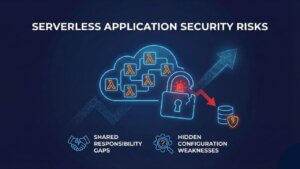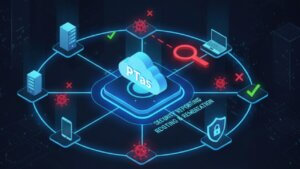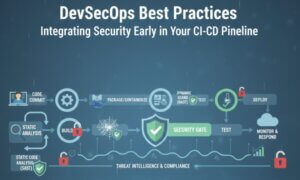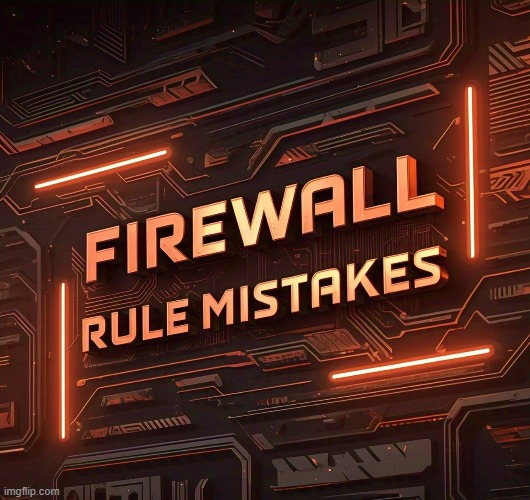Firewalls are the first line of defense in network security, controlling traffic flow and protecting against cyber threats. However, poorly configured firewall rules can create vulnerabilities, expose sensitive data, and lead to security breaches. In 2025, as cyber threats become more sophisticated, organizations must be vigilant in managing firewall rules effectively. This blog highlights the most common firewall rule mistakes and provides actionable solutions to avoid them.
1. Allowing Too Many Open Ports
Mistake: Many administrators leave too many ports open, increasing the attack surface. Commonly open ports such as 22 (SSH), 3389 (RDP), and 445 (SMB) can be exploited by attackers if not properly secured.
How to Avoid It:
Follow the principle of least privilege, only allowing essential ports.
Regularly audit open ports using tools like Nmap.
Use port knocking or multi-factor authentication (MFA) for remote access.
2. Weak or Misconfigured Default Rules
Mistake: Default firewall rules often permit more access than necessary, especially in new deployments where ‘Allow All’ rules may be present.
How to Avoid It:
Review default rules before deployment and customize them for your network needs.
Implement a deny-by-default policy, allowing only explicitly required traffic.
Regularly test firewall rules for misconfigurations.
3. Overly Permissive “Any-Any” Rules
Mistake: Some administrators use “allow any source to any destination” rules for convenience, but this defeats the purpose of a firewall by exposing systems to unauthorized access.
How to Avoid It:
Define specific source and destination IPs and limit access to only necessary applications.
Use logging and monitoring to detect unauthorized access attempts.
Conduct regular security reviews to identify and remove overly permissive rules.
4. Failure to Regularly Update Firewall Rules
Mistake: Organizations often set firewall rules and forget them, leading to outdated configurations that no longer reflect security best practices or network changes.
How to Avoid It:
Schedule quarterly firewall audits to review and update rules.
Automate rule expiration policies, requiring periodic re-evaluation.
Stay informed about emerging threats and adjust rules accordingly.
5. Ignoring Log Monitoring and Analysis
Mistake: Many businesses neglect to review firewall logs, missing indicators of compromise (IoC) such as repeated unauthorized access attempts or unusual traffic patterns.
How to Avoid It:
Use Security Information and Event Management (SIEM) tools to analyze logs.
Set up alerts for suspicious activities like failed login attempts.
Conduct forensic investigations on unusual firewall events.
6. Not Implementing Network Segmentation
Mistake: A flat network architecture allows attackers to move laterally once inside, increasing the impact of a breach.
How to Avoid It:
Segment networks using Virtual LANs (VLANs) and firewall zones.
Define access control lists (ACLs) to restrict movement between network segments.
Implement a Zero Trust model, requiring verification for all connections.
7. Misconfigured VPN Rules
Mistake: VPN misconfigurations can allow unauthorized access or expose internal networks to external threats.
How to Avoid It:
Restrict VPN access to authorized users and devices only.
Enforce multi-factor authentication (MFA) for VPN connections.
Regularly test VPN configurations to ensure compliance with security policies.
8. Allowing Unrestricted Outbound Traffic
Mistake: Many firewall configurations focus on blocking inbound threats but neglect outbound traffic, which can allow malware or data exfiltration.
How to Avoid It:
Restrict outbound traffic to only necessary destinations and protocols.
Monitor traffic with intrusion detection systems (IDS) to identify suspicious activity.
Implement data loss prevention (DLP) policies to prevent unauthorized data transfers.
9. Relying Solely on IP-Based Rules
Mistake: IP-based rules alone are insufficient as attackers frequently change IP addresses or use compromised devices within trusted networks.
How to Avoid It:
Use identity-based access control instead of relying solely on IP addresses.
Deploy firewall rules based on device posture and user authentication.
Implement behavioral analytics to detect anomalies in network traffic.
10. Inconsistent Firewall Policies Across Multiple Environments
Mistake: Organizations with hybrid or multi-cloud environments often have inconsistent firewall policies, leading to security gaps.
How to Avoid It:
Use centralized firewall management tools to ensure consistency.
Establish a uniform policy framework across on-premises, cloud, and hybrid environments.
Conduct regular security audits to identify discrepancies.
Conclusion
Firewall misconfigurations remain a significant cybersecurity risk, but organizations can mitigate threats by following best practices. Avoiding overly permissive rules, regularly auditing configurations, enforcing strong access controls, and leveraging monitoring tools can greatly enhance network security. In 2025, as cyber threats continue to evolve, businesses must stay proactive in managing and optimizing firewall rules to safeguard critical assets effectively.
References
Why Businesses Trust SecureMyOrg for Comprehensive Network Security
At SecureMyOrg, we uncover and fix all possible security vulnerabilities of mobile and web, while providing solutions to mitigate risks. We are trusted by renowned companies like Yahoo, Gojek and Rippling, and with 100% client satisfaction, you’re in safe hands!







Some of the things people reach out to us for –
- Building their cybersecurity program from scratch – setting up cloud security using cost-effective tools, SIEM for alert monitoring, building policies for the company
- Vulnerability Assessment and Penetration Testing ( VAPT ) – We have certified professionals, with certifications like OSCP, CREST – CPSA & CRT, CKA and CKS
- DevSecOps consulting
- Red Teaming activity
- Regular security audits, before product release
- Full time security engineers.
Relevant Posts

Why Weak Serverless Application Security Puts Your Business at Risk
Weak security in serverless environments often goes unnoticed until it leads to real damage. Misconfigured triggers, broad permissions, and poor visibility can expose sensitive data and disrupt business operations. Understanding where the risks appear is the first step toward building safer, more reliable serverless applications.

What Is Penetration Testing as a Service?
Penetration testing as a service (PTaaS) lets experts simulate real attacks to uncover vulnerabilities before hackers do. This guide explains the process, benefits, and costs, helping businesses strengthen defenses with predictable, ongoing security checks.

How To Inspect Encrypted Traffic Without Breaking Privacy
Network administrators face a challenge: securing systems while respecting privacy. This guide explains how to inspect encrypted traffic without breaking privacy using metadata, anomaly detection, and machine learning ensuring visibility, compliance, and trust.

How to Audit Infrastructure as Code (IaC) for Security Vulnerabilities
Discover how to audit Infrastructure as Code (IaC) for security vulnerabilities with this practical guide. Learn to scan IaC files using tools like Checkov, fix issues like exposed resources, and integrate audits into CI/CD pipelines. Protect your cloud systems from misconfigurations and ensure compliance with clear, actionable steps.

DevSecOps Best Practices: Integrating Security Early in Your CI/CD Pipeline
This article provides a practical guide to embedding security into every stage of your CI/CD pipeline. Learn core DevSecOps best practices like SAST, DAST, dependency scanning, secrets management, and compliance automation to catch vulnerabilities early, foster a culture of shared ownership, and build a secure-by-design development process that accelerates release cycles.

5 Cloud Misconfigurations That Lead to Data Breaches
Cloud misconfigurations are one of the leading causes of data breaches, yet they’re also among the most preventable. From exposed storage buckets to weak IAM policies, attackers exploit these mistakes daily. Learn about the top 5 misconfigurations and how your organization can fix them before they lead to costly data exposure.

